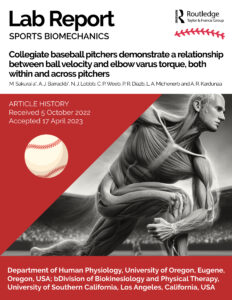 Are you searching for the science behind Injury Risk, Pitching Performance, & Velocity? Then this is the article for you!
Are you searching for the science behind Injury Risk, Pitching Performance, & Velocity? Then this is the article for you!
In the world of collegiate baseball, pitchers face the constant challenge of optimizing performance while managing the risk of injury. A pivotal aspect of this balancing act is understanding the relationship between pitching velocity and the biomechanical forces at play, particularly elbow varus torque. This torque, often experienced during the pitching motion, is a critical factor in the stress placed on a pitcher's arm, particularly the ulnar collateral ligament (UCL).
The Critical Role of Elbow Varus Torque: Injury Risk, Pitching Performance, & Velocity
Understanding the critical role of elbow varus torque is essential for collegiate pitchers aiming to optimize their performance while minimizing injury risks. This section delves into what elbow varus torque is and how it impacts pitchers.
What Is Elbow Varus Torque?
Elbow varus torque refers to the rotational force exerted on a pitcher's elbow joint during the pitching motion. This force is primarily generated as the pitcher accelerates the baseball towards home plate, with the arm moving in an overhead arc. The term "varus" refers to the inward motion of the forearm towards the body, which places a significant load on the structures of the elbow, particularly the ulnar collateral ligament (UCL). This ligament is crucial for stabilizing the elbow against the stresses imposed during the high-speed and high-force action of throwing a baseball.
 How Elbow Varus Torque Affects Pitchers
How Elbow Varus Torque Affects Pitchers
Elbow varus torque has a profound impact on pitchers, particularly in how it influences the risk of injuries and the longevity of a pitching career. As a pitcher increases the velocity of their throws, the varus torque also tends to increase, intensifying the stress on the elbow joint and associated structures. This increased stress can lead to a range of elbow-related injuries, the most notorious being UCL injuries, which can result in conditions like ulnar collateral ligament sprains or even the dreaded "Tommy John" surgery.
Moreover, the repetitive nature of pitching and the continuous exposure to high levels of varus torque can lead to chronic wear and tear on the elbow joint. Over time, this can cause changes in the joint's mechanics, potentially leading to decreased pitching performance, increased pain, and ultimately, a shortened career if not managed properly.
To mitigate these risks, understanding and managing elbow varus torque through proper technique, conditioning, and preventive care are crucial. This involves working closely with coaches, athletic trainers, and sports medicine professionals to ensure that pitching practices are both effective and sustainable over the long term. By addressing the biomechanics of pitching, specifically the factors contributing to varus torque, pitchers can maintain a healthier arm and extend their playing careers while still achieving optimal performance levels.
Investigating the T-V Relationship in Collegiate Pitchers: Injury Risk, Pitching Performance, & Velocity
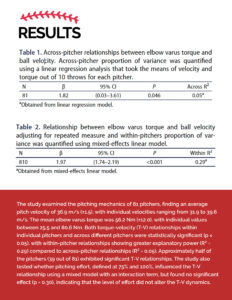 Exploring the torque-velocity (T-V) relationship in collegiate pitchers is crucial for understanding how these athletes can manage their performance levels while minimizing injury risks. This relationship between the speed of pitches and the torque exerted on the elbow provides deep insights into the biomechanical demands of pitching.
Exploring the torque-velocity (T-V) relationship in collegiate pitchers is crucial for understanding how these athletes can manage their performance levels while minimizing injury risks. This relationship between the speed of pitches and the torque exerted on the elbow provides deep insights into the biomechanical demands of pitching.
Insights from Recent Studies: Injury Risk, Pitching Performance, & Velocity
Recent studies have provided a clearer picture of how ball velocity correlates with elbow varus torque among collegiate pitchers. These studies typically use sophisticated motion capture technology and biomechanical analysis to measure the forces exerted on a pitcher's arm during the delivery of a pitch. The findings often reveal that higher pitch velocities are generally associated with increased elbow torque, underscoring a direct biomechanical link. However, these studies also highlight significant variability among individual pitchers. For some, increased velocity does not proportionately increase elbow torque, suggesting that other factors such as pitching mechanics, physical conditioning, and even genetic predispositions play roles in this relationship.
The Significance of the T-V Relationship
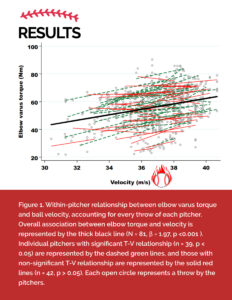 The T-V relationship is significant because it directly impacts how coaches and sports medicine professionals approach pitcher training and rehabilitation. Understanding this relationship helps in developing personalized training programs that consider the unique biomechanical characteristics of each pitcher. For instance, if a pitcher exhibits a sharp increase in elbow torque with minor increases in velocity, strategies might be implemented to adjust their mechanics to reduce stress on the elbow without sacrificing performance. Additionally, this understanding aids in injury prevention, as identifying pitchers at higher risk due to unfavorable T-V profiles can lead to preemptive interventions.
The T-V relationship is significant because it directly impacts how coaches and sports medicine professionals approach pitcher training and rehabilitation. Understanding this relationship helps in developing personalized training programs that consider the unique biomechanical characteristics of each pitcher. For instance, if a pitcher exhibits a sharp increase in elbow torque with minor increases in velocity, strategies might be implemented to adjust their mechanics to reduce stress on the elbow without sacrificing performance. Additionally, this understanding aids in injury prevention, as identifying pitchers at higher risk due to unfavorable T-V profiles can lead to preemptive interventions.
Individual Variability in T-V Relationships
Individual variability in the T-V relationship among pitchers is perhaps one of the most critical aspects uncovered in recent research. This variability means that what works for one pitcher in terms of technique adjustment, conditioning, or workload management might not work for another. Coaches and trainers must recognize these individual differences and avoid a one-size-fits-all approach to training and development. Instead, they should focus on tailored programs that optimize each pitcher's biomechanics and physical capabilities. This tailored approach not only enhances performance but also significantly reduces the risk of injury, helping pitchers to maintain a longer and more productive career in baseball.
By carefully analyzing and responding to the T-V relationship, collegiate baseball programs can better support their pitchers, fostering environments that enhance both performance and athlete health.
Preventative Strategies for Reducing Injury Risk: Injury Risk, Pitching Performance, & Velocity
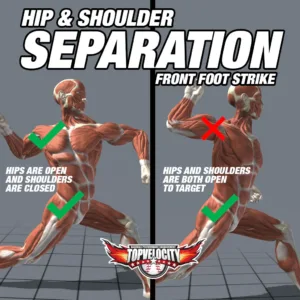 Preventing injuries is a key concern for collegiate pitchers, as maintaining optimal health significantly impacts their performance and career longevity. Effective strategies focused on proper technique, strength and conditioning, and regular medical assessments can significantly reduce the likelihood of injuries.
Preventing injuries is a key concern for collegiate pitchers, as maintaining optimal health significantly impacts their performance and career longevity. Effective strategies focused on proper technique, strength and conditioning, and regular medical assessments can significantly reduce the likelihood of injuries.
Importance of Proper Technique: Injury Risk, Pitching Performance, & Velocity
The foundation of injury prevention in pitching begins with the mastery of proper technique. Proper pitching mechanics not only enhance performance but also minimize stress on the body, particularly in high-risk areas such as the shoulder and elbow. Coaches and sports biomechanists play a crucial role in analyzing a pitcher’s technique to identify and correct biomechanical flaws that could lead to injury. For instance, ensuring that pitchers do not overextend their arms or place excessive torque on their elbows during throws is vital. Additionally, proper foot placement, body alignment, and timing of movements are essential components that help distribute the physical stress of pitching more evenly across the body, reducing the load on any single joint or muscle group.
Strength and Conditioning: Injury Risk, Pitching Performance, & Velocity
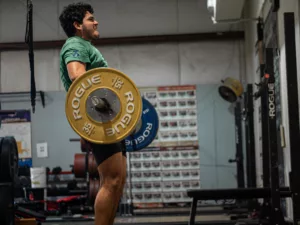 A comprehensive strength and conditioning program is essential for injury prevention and performance enhancement in collegiate pitchers. Such programs should focus on building the overall strength, flexibility, and endurance necessary to withstand the rigors of pitching. Key areas of focus include the shoulder, back, core, and legs. Strengthening these areas helps to support the mechanics of pitching and can absorb and redistribute the stresses that pitching places on the body. Flexibility exercises, such as dynamic stretching and yoga, are also crucial as they improve range of motion and help prevent muscle strains and ligament injuries. Furthermore, conditioning work should be tailored to ensure that pitchers develop endurance that allows them to maintain high performance throughout games and across seasons without compromising their technique due to fatigue.
A comprehensive strength and conditioning program is essential for injury prevention and performance enhancement in collegiate pitchers. Such programs should focus on building the overall strength, flexibility, and endurance necessary to withstand the rigors of pitching. Key areas of focus include the shoulder, back, core, and legs. Strengthening these areas helps to support the mechanics of pitching and can absorb and redistribute the stresses that pitching places on the body. Flexibility exercises, such as dynamic stretching and yoga, are also crucial as they improve range of motion and help prevent muscle strains and ligament injuries. Furthermore, conditioning work should be tailored to ensure that pitchers develop endurance that allows them to maintain high performance throughout games and across seasons without compromising their technique due to fatigue.
Regular Medical Assessments: Injury Risk, Pitching Performance, & Velocity
Regular medical assessments are another pillar of effective injury prevention strategies. These assessments should be comprehensive and frequent, involving physical examinations, strength and flexibility assessments, and, where necessary, imaging studies to detect early signs of overuse injuries. Sports medicine professionals can monitor changes in a pitcher’s condition over time, allowing for early intervention if injury risk factors are detected. Preventive interventions might include adjustments in training load, specific conditioning exercises, or temporary modifications in pitching technique to allow recovery without complete cessation of activity. Moreover, regular communication between medical staff, coaches, and athletes is crucial to ensure that any concerns are promptly addressed and that the athlete’s health is always prioritized.
By implementing these preventative strategies, collegiate baseball programs can help their pitchers reduce the risk of injury, extend their playing careers, and achieve higher levels of performance.
TopVelocity Programs and Products Designed to Increase Performance Safely
TopVelocity offers a range of innovative programs and products tailored to enhance pitching performance without increasing the risk of injury. Each product and program is grounded in scientific principles and is designed to target specific areas of athletic development. Here is an overview of some of the key offerings:
 3X Extreme Pitching Velocity Program
3X Extreme Pitching Velocity Program
The 3X Extreme Pitching Velocity Program is a comprehensive approach to pitching that goes beyond traditional coaching methods. Designed for pitchers of all ages, this program combines scientific insights with practical exercises to unlock hidden pitching velocity. The program promises not only to increase pitch speed by 5-10 mph but also to enhance overall pitching mechanics. It is an ideal choice for those serious about moving up to the next level and potentially getting drafted. This program includes lifelong tools and techniques for continued development in pitching velocity. For more information, visit TopVelocity.net.
 3X Velocity Development Kit with Trunk Excelerator
3X Velocity Development Kit with Trunk Excelerator
The Trunk Excelerator is a groundbreaking training device aimed at enhancing trunk strength and mechanics. By focusing on the trunk, this tool helps distribute the kinetic energy throughout the body more efficiently, which is crucial for achieving higher throwing velocities without straining the arms. Suitable for players at any level, the Trunk Excelerator is essential for those looking to improve their game fundamentally. Enhance your throwing and pitching abilities by learning more about this device at TopVelocity.net.
 3X Velocity Development Kit with Stride Excelerator
3X Velocity Development Kit with Stride Excelerator
The Stride Excelerator specifically targets the enhancement of stride mechanics and leg strength. It helps athletes increase their stride depth and stability, which are critical components for effective momentum acceleration during pitching. By improving pelvis mobility and leg power, this tool assists pitchers and position players alike in reaching peak performance levels. Discover more about how the Stride Excelerator can elevate your performance at TopVelocity.net.
 TopVelocity Sled
TopVelocity Sled
The TopVelocity Sled focuses on developing lower body strength and mechanics, a key area often overlooked in traditional pitching training. This innovative training tool is designed to teach athletes how to effectively utilize their lower half, increasing pitching velocity while reducing arm stress and potential injuries. This approach to training helps create a more balanced, powerful, and resilient pitcher. Find out how to incorporate the TopVelocity Sled into your training regimen by visiting TopVelocity.net.
 3X Velocity Camp - Online Course
3X Velocity Camp - Online Course
For those unable to attend the physical 3X Velocity Camp near New Orleans, LA, the Online Course version offers an equally effective alternative. This course has shown to significantly enhance the effectiveness of the 3X Pitching Velocity Program, with a 146% increase in the success rate among participants. It's structured to help pitchers develop into elite athletes through comprehensive, step-by-step guidance. Space is limited each month, so prompt registration is advised to secure a spot and begin the journey towards elite pitching performance. Learn more and register at TopVelocity.net.
Each of these programs and products from TopVelocity is designed not just to increase performance but to do so in a way that respects and preserves the athlete's body, ensuring longevity and health in the sport of baseball.
FAQs: Injury Risk, Pitching Performance, & Velocity
- What is the most common injury for collegiate pitchers? The most common injury among collegiate pitchers is the ulnar collateral ligament (UCL) injury. This injury occurs due to the repetitive stress and high torque placed on the elbow during pitching. The UCL is crucial for stabilizing the elbow during the high-speed throwing motions that pitchers perform. When this ligament is damaged, it can lead to significant pain, decreased pitching effectiveness, and sometimes requires surgery, commonly known as Tommy John surgery, to repair.
- How can pitchers increase their velocity without increasing injury risk? Increasing pitching velocity without elevating the risk of injury involves a holistic approach that includes proper mechanics, physical conditioning, and adequate rest. Pitchers should focus on:
- Enhancing core strength and flexibility to maintain balance and force distribution.
- Improving leg strength and mechanics, as much of the power in a pitch originates from the lower body.
- Refining pitching technique to ensure that movements are biomechanically efficient and place less stress on the arm.
- Incremental training to gradually increase the intensity and volume of pitching, allowing the body to adapt without being overloaded.
- What role does technology play in modern pitching training? Technology plays a pivotal role in modern pitching training by providing detailed biomechanical analysis and real-time feedback. Tools like high-speed cameras, wearable sensors, and motion analysis software help coaches and trainers assess a pitcher's mechanics and physiological responses. This data-driven approach allows for more personalized training programs and can identify potential injury risks before they become problematic. Technology also aids in tracking progress and ensuring that training adjustments are based on objective metrics.
- Can mental training really improve a pitcher's performance? Yes, mental training can significantly improve a pitcher's performance. Mental skills training, including visualization, focus techniques, and stress management, can enhance a pitcher’s ability to perform under pressure, maintain concentration throughout the game, and recover from setbacks more effectively. Techniques such as mindfulness and cognitive-behavioral strategies help pitchers manage anxiety and maintain confidence, which are crucial for optimal performance.
- How often should a pitcher train to optimize performance and minimize injury? The training frequency for a pitcher should be carefully managed to balance skill development with adequate rest. A general guideline is for pitchers to engage in pitching-specific training 3-4 times per week, interspersed with rest days and lower intensity workouts that focus on conditioning, strength training, and recovery. It’s also essential for pitchers to have an off-season period where training intensity is reduced to allow for complete recovery and addressing any lingering physical issues.
- What are the future trends in pitching training? Future trends in pitching training are likely to emphasize even more personalized and data-driven approaches. Advancements in technology will continue to refine how pitchers are trained, with increased use of AI and machine learning to predict performance outcomes and injury risks. Training may also become more integrated with health and wellness monitoring, ensuring that a pitcher’s overall well-being is considered in their training regime. Additionally, there is a growing trend towards incorporating more holistic practices, such as yoga and mental health strategies, into regular training programs to support the overall health and performance of pitchers.


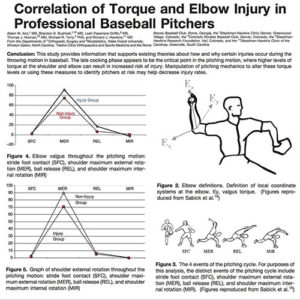 How Elbow Varus Torque Affects Pitchers
How Elbow Varus Torque Affects Pitchers 3X Extreme Pitching Velocity Program
3X Extreme Pitching Velocity Program
 3X Velocity Development Kit with Trunk Excelerator
3X Velocity Development Kit with Trunk Excelerator 3X Velocity Development Kit with Stride Excelerator
3X Velocity Development Kit with Stride Excelerator TopVelocity Sled
TopVelocity Sled 3X Velocity Camp - Online Course
3X Velocity Camp - Online Course